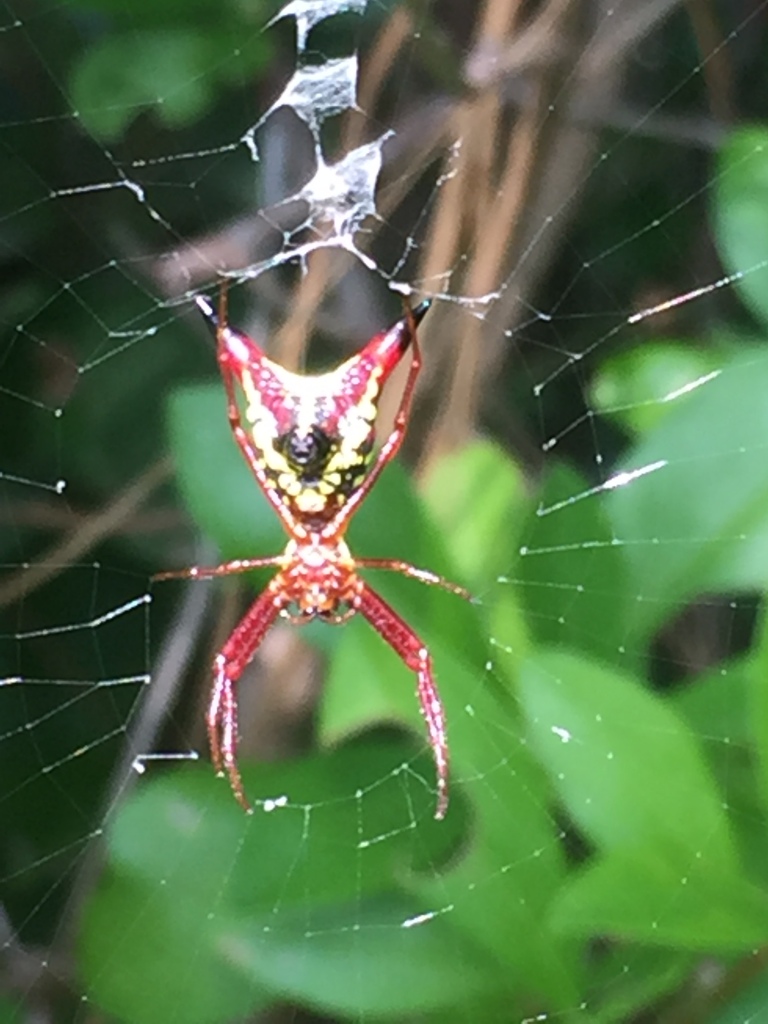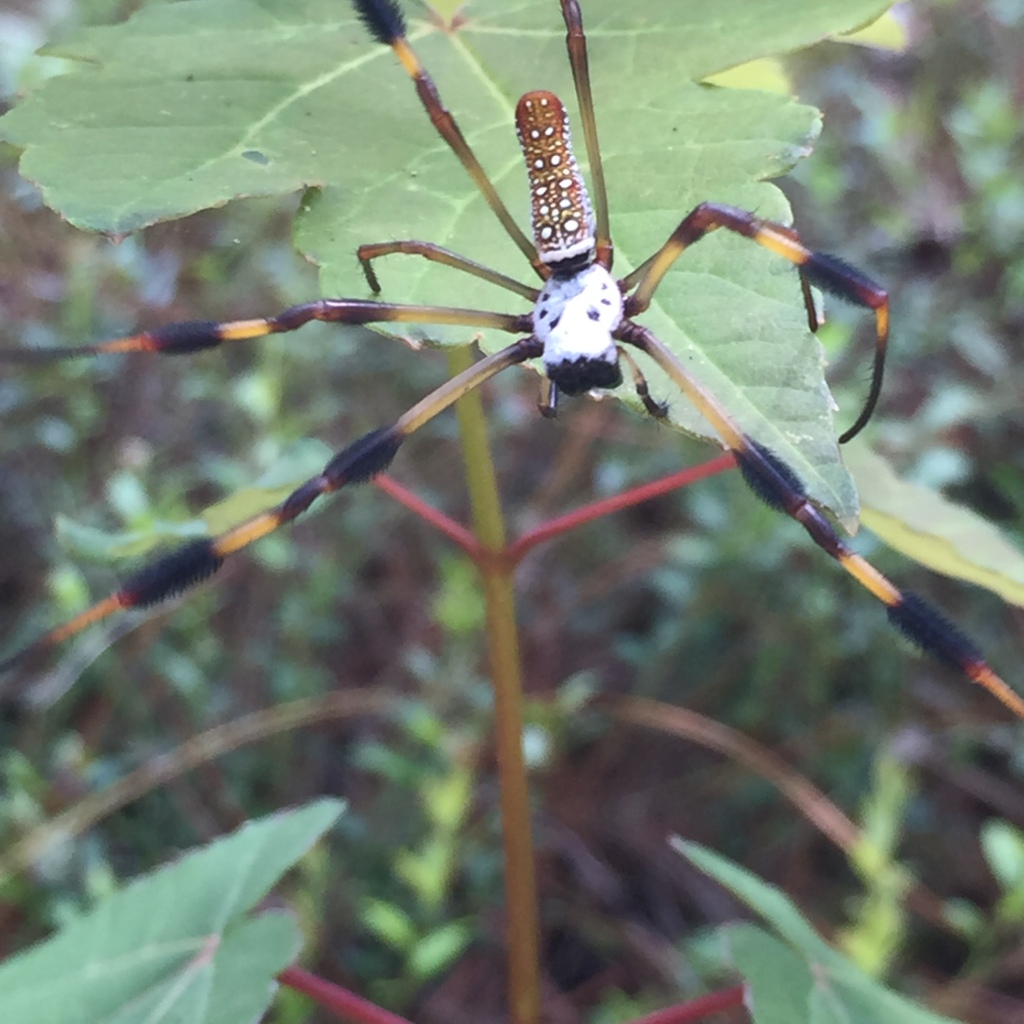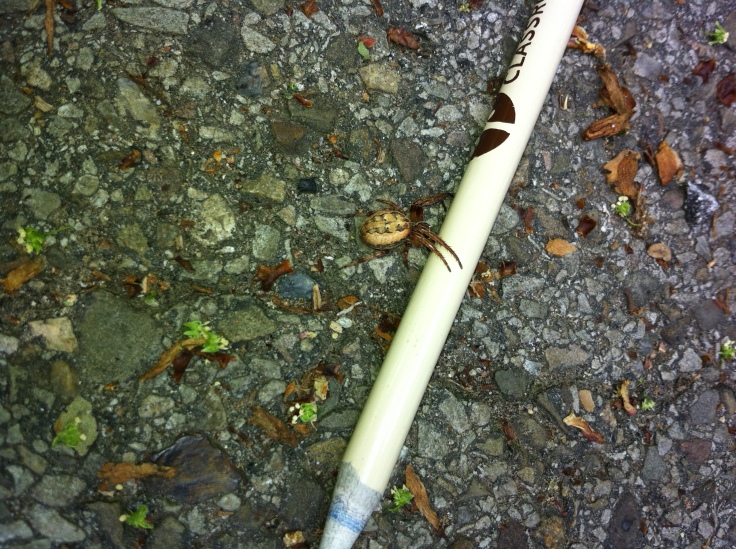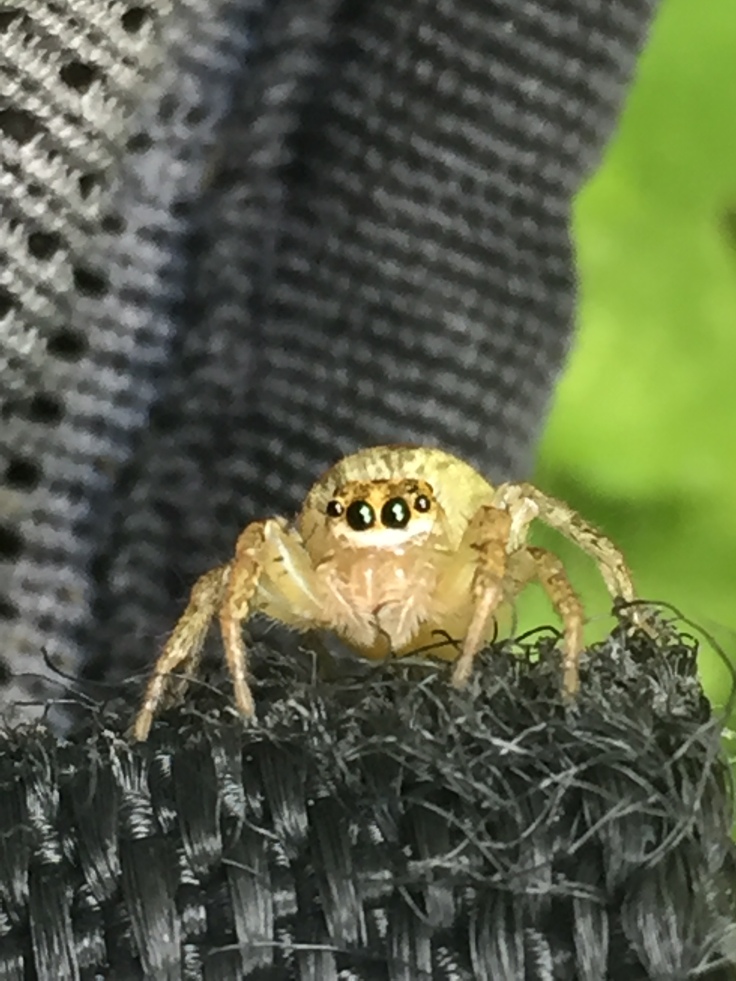What makes for a good spider photo ID? Here are a few tips that will help if you’re thinking of sending a photo to any type of social media group, nature app, or your friendly neighborhood “spiderologist”. Identifying spiders to species by looking at a photo is very tricky and not as easy as you’d think! There are seventy-one families of spiders in North America (probably more now). Identification to the taxonomic family level is possible via photos. Getting more specific usually requires a dissecting scope and a good manual, but knowing a spider’s family can provide you with an abundance of information without having to get specific. There are many spider enthusiasts willing to help if we are able to see some key features.
A clear, close up shot of the eyes. This does mean you have to get close to the spider and maybe bust out your awesome camera macro setting! You’ll never have to worry about the spiders blinking. The issue will be getting them to stay put long enough because, yes, you are a very large possible predator who makes a lot of vibrations! The number of eyes and their arrangement can determine what family (or even genus) the spider belongs to. Here are some examples of close up portraits. Proper lighting is essential and in most cases, I’ve had to catch the spider to be able to get these shots. Of course, catching the spider is totally optional, but you might get a better picture! Remember, most of the spiders you’re going to encounter are completely harmless! And the ones that are medically significant do not readily bite unless they are being actively squashed against your skin!

Funnel web weaver (Agelenidae family) – there are eight eyes (hard to see in this pic) all about the same size 
Wolf Spider (Lycosidae family) – notice the larger pair of eyes (eight eyes total) facing forward and two smaller eyes behind them. The other four are in a row beneath the largest eyes 
Fishing spider (Pisauridae family) – notice the eyes (eight) are all similar size. This spider’s face has wide, squarish “cheeks” 
Brown recluse (Sicariidae family) – recluses have a total of six eyes in three pairs that look like two eyes and a nose
Was it in a web? Not all spiders spin trapping webs, some hunt by prowling or ambush. Mentioning whether your spider was in a web or not can be a clue. If it was in a web, noting the structure or shape of the web is helpful, although not always foolproof. You might find a male spider that would normally be associated with a web wandering in search of a mate.

A bowl- shaped web characteristic of the Linyphiidae family 
The famous orb web! 
The funnel web of Agelenidae 
The messy “cobweb” characteristic of the Theridiidae family

Crab spiders (Thomisidae family) hunt by ambush 
Lynx spider (Oxyopidae family) – a nimble and active hunter that does not use a web 
A spider in the Pisauridae family waiting in ambush 
Dysderidae family – mostly found hunting under rocks and logs without a web
Where was the spider found? Definitely mention where you are, city and state. This helps the identifier exclude certain types of spiders. For example, in the lovely city of Pittsburgh, we are too far north to have the pleasure of seeing goldensilk orbweavers when we go hiking and the west coast doesn’t get to see the spiky awesomeness of an Arrowshaped micrathena when they go hiking. The brown recluse is often claimed to have been found in areas out of their natural range which is probably more likely the mis-identification of a native spider. Location is important! On many spider ID platforms, location is a required field for submission. Getting specific about exactly where you found your spider doesn’t hurt either, like in your garage or garden. Read Spider Real Estate for some interesting spider venues.

Arrowshaped micrathena, an eastern species 
Goldensilk orb weaver, a southern species – unfortunately not found in Pittsburgh
How big is it? “Big” can be subjective depending on one’s comfort level around spiders or one’s appetite for drama. Again, you may need to get close to get your best guess. Not everyone carries a ruler around with them (ahem), or wants to hold spider in their hand, so a familiar object like a lighter, coin, or a pencil in the pic will help if it’s practical. Spiders are officially measured from their head to the end of their butts, legs are not included, so that’s something to keep in mind. The leg span of a cellar spider is larger than the leg span of the much heavier-bodied wolf spider so “coin sizes” can be deceiving without a picture.

Spitting spider (Scytodidae family) 
Orb weaver (Araneidae family)
Spinnerets. The spinnerets are where the spider dispenses its silk. Located at the end of the abdomen, most spiders have three pairs of spinnerets. There are a few families that only have two pairs. The spinnerets can be shaped like little exhaust pipes consistent in the Gnaphosidae family or in a horizontal row characteristic of the Hahniidae family. There is a spider that’s only found in southern Texas and southern Florida called the Longspinneret spider. Its spinnerets are actually longer than its body making this a one-and-done distinguishable ID characteristic.

Longspinneret spider (Hersiliidae family). Photo by Rick Borchelt via Bugguide.net. Used with permission.

Funnel web weaver (Agelenidae family) with long, tapering pair of spinnerets

Parson spider (Gnaposidae family) with “exhaust pipe” spinnerets
Notice the standouts. If the spider was faster than your camera and you missed the shot, what did you immediately notice about the spider? Was it hopping? Was it brightly colored? Did it have a weird shape? When I’m stumped on an ID, I follow any leads based on a stand out. I’ve done google searches for “spider with yellow shoulders” before and got nothing back except for shoulder tattoos of spiders with yellow in them, but doing an internet search might get you on the right track.

Standouts: bright color, large pair of eyes, stout body, hopping, active in daylight. This is a jumping spider in the Salticidae family. 
Standouts: overall pattern and the heavy banding that is only on the last pair of legs. This is an Ant-like running spider in the Corrinidae family.
Okay, so now that you have a better idea of what can help you get an ID, here are some sites (definitely not all of them) where someone will be happy to take a look at your pics and get back to you with an ID or at least an educated guess.
North American Spider ID facebook group, Spiders Ohio facebook group, Bugguide.net, American Arachnological Society facebook page, @Recluse or not? via Twitter
I hope these suggestions are helpful! Any interest in spiders is supported and encouraged, even if you only have a blurry photo from a distance. If you are curious enough to want to know what kind of spider you have, there is a passionate community waiting to help you! Happy “spidering”!
Resources and references:
Bradley, Richard. Common Spiders of North America. Berkeley, CA: University of California Press; 2013.
Common Names of Arachnids 2003 Fifth Edition – The American Arachnological Society; Committee on Common Names of Arachnids
Foelix, Rainer F. Spider Biology, third ed. New York, New York: Oxford University Press; 2011.
Ubick, D., Paquin, P., Cushing, P.E. and Roth, V. (eds). 2017. Spiders of North America: an identification manual, 2nd Edition. American Arachnological Society, Keene, New Hampshire, USA.
World Spider Catalog (2020). World Spider Catalog. Natural History Museum Bern, online at http://wsc.nmbe.ch, version 21.5, accessed August, 28, 2020.


Your Pisauridae looks like they’ve got a really bad toupee!
Thanks for your posts : )
LikeLike
Haha!! You’re welcome!
LikeLike